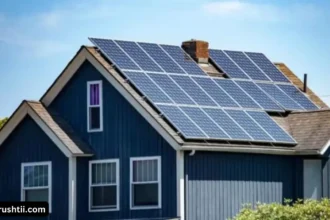Source: https://unsplash.com/photos/a-person-working-on-a-solar-panel-rNn_TU8dvoY
Technology moves fast. A device that feels cutting-edge today can feel outdated within a couple of years. But constantly chasing the latest upgrades isn’t always smart—or sustainable.
Future-proofing isn’t about buying the most expensive gear or chasing trends. It’s about making smarter choices today that hold up tomorrow.
From energy to software to longevity, the right moves can extend the life of your tech and save you from unnecessary upgrades down the line
Start with Energy Independence
One of the first things to consider when future-proofing your tech setup is how it gets powered. As energy grids face more pressure and costs continue to rise, having access to renewable energy is becoming less of a luxury and more of a long-term strategy.
That’s where solar panels can make a real difference. Whether used to power an entire home or just to offset the load of your devices, solar panels reduce your dependence on the grid.
Pair them with a storage solution, and you gain the ability to keep your most important systems online—even during outages. It’s a smart move not just for sustainability, but for stability too.
Prioritise Software Support and Ecosystems
When choosing devices or platforms, don’t just look at the hardware specs. Consider the longevity of software updates. Devices with regular, long-term support will stay secure and usable for far longer than ones that are quickly abandoned.
It’s also worth looking at the ecosystem a device belongs to. Sticking with well-supported systems—like macOS, Windows, or major Android versions—gives you better app compatibility and easier updates.
Open-source software can be another future-proof option, as it often has community-led support even after official updates end.
Think Modular and Repairable
One of the fastest ways tech becomes obsolete is through limited repair options. A cracked screen or a dying battery shouldn’t mean tossing an entire device—but with many modern products, it does.
Seek out products designed with repairability in mind. Laptops with replaceable RAM or SSDs, desktops with standard parts, and smartphones with accessible battery swaps are all easier to keep running over time.
Some manufacturers now even rate their devices based on how easy they are to fix, which is a useful guide when shopping.
Invest in Connectivity that Lasts
Your tech is only as good as its connection. As Wi-Fi standards evolve and more devices go wireless, having reliable, up-to-date networking gear is essential.
Look for routers and modems that support newer standards like Wi-Fi 6 or higher. These not only offer faster speeds but also better handling of multiple connected devices. If you’re wiring a home or office, using higher-grade Ethernet cabling (like Cat6 or Cat6a) will ensure your setup can handle future speeds without rewiring.
Avoid Over-Spec’ing for the Sake of It
It’s easy to be tempted by top-of-the-line specs—especially when marketing promises they’ll “future-proof” your setup. But unless you have a specific use case (like video editing, coding, or gaming), most people don’t need the highest possible RAM or processor power.
Instead, focus on balance. Choose a well-reviewed device with reliable performance, strong battery life, and good build quality. That will serve you better in the long run than chasing specs that sound impressive but rarely get used.
Make Digital Backups a Habit
A big part of future-proofing is about protecting your digital life, not just your devices. Regular backups ensure that even if your hardware fails, your data doesn’t disappear with it.
Cloud storage is a simple solution for most users, offering automatic backups and access from anywhere. For added protection, pair it with an external hard drive that you update regularly. Think of backups as your digital insurance policy—they’re boring until they save you.
Longevity Starts with Mindset
The best future-proofing doesn’t come from spending more—it comes from thinking differently. It’s about choosing tools that last, making repairs when needed, and powering your tech sustainably.
If you approach your setup with intention, you won’t need to panic every time a new device launches. Instead of scrambling to keep up, you’ll be ready for what’s next—on your own terms.

















